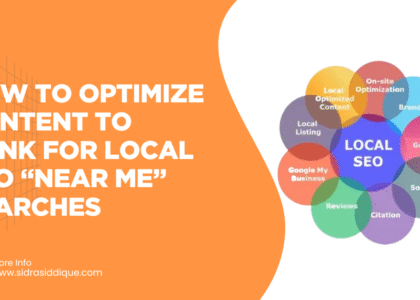Mastering SEO keyword research is the foundation of achieving higher visibility in search engine rankings and driving valuable organic traffic. Without the right keywords, even the most engaging content may never reach its intended audience. This complete guide will walk you through the essentials of identifying, analyzing, and applying keywords that align with user intent, search trends, and business goals.
By understanding how to balance short-tail and long-tail terms, analyze competition, and leverage powerful tools, you can create a winning content strategy that attracts the right audience and boosts conversions. Let’s dive into the proven methods to rank higher and grow your online presence.
What is Keyword Research?
Keyword research is the process of finding and analyzing search queries people use online. The definition and core purpose of keyword research is simple: to discover the terms your audience types into search engines and use them strategically in web content creation. This process helps businesses align content creation with what people are actively searching for, improving relevance and visibility.
When we compare keywords vs. queries vs. topics, the differences matter. Keywords are specific words or phrases, queries are the actual search terms users type, and topics are broader themes that connect multiple keywords. For example, “best running shoes” is a keyword, “what are the best running shoes for flat feet?” is a query, and “running shoe reviews” is a topic. Understanding this difference helps shape a smarter content marketing strategy.
Why is Keyword Research Important for SEO?
The connection between keywords and search engines is critical. Search engines like Google and Bing rely on keywords to decide which landing pages, product pages, or blog posts should appear in search results. The closer your keywords align with user behavior and search intent, the better your chances of earning top search engine rankings (SERPs).
Strong keyword research directly boosts organic traffic engagement. By identifying buyer journey keywords and secondary keywords, you create content that answers real questions and solves problems. This leads to improved conversion optimization and business growth. In fact, companies that use structured keyword research report much higher visibility. A case study by Moz showed that one e-commerce store doubled its traffic within six months by applying structured keyword clustering and avoiding irrelevant terms.
Understanding Search Intent
Search intent, sometimes called user intent, reveals why a person is searching. Google’s search algorithms use this to rank pages that best match intent. If you ignore intent, you may rank poorly even if your keywords are strong.
There are four main categories: Informational (learning something), Navigational (finding a brand), Transactional (making a purchase), and Commercial (comparing before buying). Aligning content with intent is the key to better organic search traffic. For example, an article answering “how to do keyword research” satisfies informational intent, while a Google Ads landing page for “buy SEO services” aligns with transactional intent. Matching content to intent ensures higher engagement and better rankings.
Types of Keywords You Need to Know
There are many keyword types, and each plays a role in content strategy. Short-tail keywords are broad, like “SEO tools,” while long-tail keywords are more specific, like “best free SEO tools for bloggers.” Short-tail terms drive volume but have more keyword competition, while long-tail terms attract targeted visitors and higher conversion rates.
Keywords can also be branded vs. non-branded, geo-targeted/local keywords, LSI & semantic keywords, and search intent–based keyword types. For example, local businesses should focus on geo-modifiers like “best dentist in New York.” Meanwhile, semantic keywords help cover related searches for a topic, strengthening keyword relevance and topical authority.
Elements of Successful Keyword Research
Good research depends on several elements. First, knowing your audience needs and buyer persona insights helps find terms that truly matter. If you don’t understand user behavior, you’ll miss out on key opportunities.
Next, factor in search behavior and trends. Using Google Trends or Clearscope Webinar data helps you find what’s growing in popularity. Combine this with site authority, domain authority, and competition analysis to identify terms where you can realistically compete. When done right, your keywords will align with both search engine algorithms and your business goals.
The Keyword Research Process (Step by Step)
The process begins with
Step 1: Brainstorm and list relevant topics. These topics are based on your business, services, or products.
Step 2: Identify keywords you already rank for using Google Search Console.
Step 3: Find new keyword opportunities through tools like SEMrush or Ahrefs.
Step 4: Analyze search volume, difficulty, and competition to see which ones are worth pursuing.
Step 5: Expand your list with long-tail keywords to target specific search intent. Finally,
Step 6: Organize, cluster, and prioritize keywords. Keyword clustering makes it easier to map terms to the right pages, ensuring no overlap or wasted effort.
Tools for Keyword Research
There are many SEO tools available. Free tools include Google Keyword Planner, Google Trends, and AnswerThePublic, which give you keyword suggestions and related searches. Paid tools like SEMrush, Ahrefs, BrightEdge, and HubSpot provide deeper analysis like keyword difficulty, backlinks, and competitor analysis.
Don’t overlook Google Search Console and Google Analytics. These show how your current content performs, what queries bring traffic, and where you need improvement. Choosing the right tool depends on budget and goals. Large SaaS companies might use enterprise platforms, while smaller blogs can rely on free tools.
Evaluating Keyword Metrics
When analyzing keywords, focus on key metrics. Search volume and seasonality show how often terms are searched and when interest peaks. For example, “Christmas gifts” spikes in December.
Other metrics include keyword difficulty, cost-per-click (CPC), and SERP features. If a keyword is dominated by knowledge panels, featured snippets, or People Also Ask, you’ll need to adjust your SEO strategy. Tracking these factors ensures smarter keyword prioritization.
Competitor Analysis in Keyword Research
Studying your competitors reveals what works. You can analyze their keyword strategies with tools like Ahrefs or SEMrush. Look at the search terms they rank for, the backlinks they earn, and the landing pages driving the most organic traffic engagement.
Identifying gaps and opportunities is crucial. If competitors ignore certain long-tail terms, you can target them for quick wins. Competitor keyword tracking is one of the most efficient ways to grow visibility fast.
How to Use Keywords in Content Strategy
Mapping keywords to the buyer journey keywords makes content more effective. Early-stage users might want blog posts, while ready-to-buy users look for product pages or landing pages.
Organize keywords into topic clusters instead of treating them individually. Use them naturally in on-page SEO elements like titles, headings, meta descriptions, alt text, and body copy. This strengthens keyword relevance and improves conversion optimization.
Best Practices for Keyword Research
Keep your keyword strategy updated. Search behavior changes quickly, and ignoring search trends can hurt visibility.
Avoid keyword stuffing and over-optimization. Focus instead on semantic keyword clustering, balancing high-volume terms with niche opportunities. This ensures both visibility and relevance.
Common Mistakes to Avoid in Keyword Research
One common mistake is targeting only high-volume terms. They bring traffic but may not convert. Another is ignoring search intent alignment, which can reduce conversion rates.
Overlooking SERP features like AI overviews or forgetting user experience are other pitfalls. Always prioritize your target audience needs over chasing numbers.
Advanced Keyword Research Techniques
Advanced tactics include keyword categorization, leveraging People Also Ask, and optimizing for voice search. Tools powered by AI and NLP make it easier to discover hidden opportunities.
Smart marketers also use zero-volume keywords and secondary keywords. Even if search volume is low, they often attract highly qualified traffic.
Keyword Research for Different SEO Goals
Different goals need different approaches. For local SEO, geo-modifiers matter. For e-commerce keyword research, focus on product pages and transactional terms. For blogs, target long-tail keywords and buyer journey keywords.
For PPC campaigns in Google Ads, focus on cost-per-click (CPC) and conversion-focused keywords. Tailoring research to goals ensures better ROI.
The Role of Keyword Research in Future SEO
The future of SEO is changing with AI overviews, featured snippets, and smarter search engine algorithms. As digital marketing evolves, so must your SEO strategy.
Future-proofing means focusing on content creation that matches real intent. Keywords will still matter, but search engines will reward knowledge panels, multimedia, and context more than simple keyword matches.
Conclusion
SEO keyword research is the backbone of every successful SEO strategy. Without it, even strong content may never reach its audience. By understanding search intent, analyzing search queries, and balancing short-tail keywords with long-tail keywords, you build visibility and improve conversion optimization.
The process goes beyond seed keywords. It’s about keyword clustering, tracking with Google Analytics, and refining with Google Search Console. Whether you’re a blog, e-commerce store, or SaaS company, strong keyword planning ensures growth.
As Google continues to evolve with AI overviews and SERP features, one thing stays true: great web content creation, guided by powerful keyword insights, will always help you rank higher and connect with your audience.
FAQs About SEO Keyword Research
- Why is it important to use keywords when searching?
Keywords act as a bridge between what users type and the content search engines deliver, helping connect queries with the most relevant information. - Are keywords still important for SEO?
Yes, keywords remain vital. While search engines use AI and semantics, well-researched keywords still guide content visibility and search engine rankings. - Why is a keyword strategy important?
A strong keyword strategy ensures your content aligns with user intent, targets the right audience, and improves traffic, engagement, and conversions. - What is a keyword search used for?
Keyword search helps identify what users are looking for, uncovering valuable topics, trends, and opportunities to optimize content effectively. - What is the advantage of using this keyword?
The right keyword improves organic search traffic, enhances relevance, and increases chances of ranking in featured snippets or top SERP positions. - What to do after keyword research?
After keyword research, you should create optimized content, structure on-page SEO elements, and track performance using Google Analytics and Google Search Console. - Is SEO becoming obsolete?
No, SEO is evolving. With AI-driven search and AI overviews, keyword research and intent alignment remain crucial for long-term visibility. - What is the best keyword research technique in SEO?
Combining long-tail keywords, keyword clustering, competitor analysis, and search trends offers the most effective and future-proof strategy. - Do keywords really matter today?
Yes, keywords still matter. While search engines understand context better, targeted keywords remain essential for content strategy and digital marketing success.





